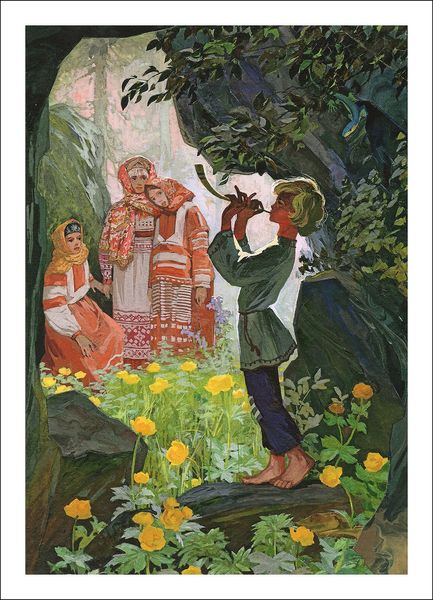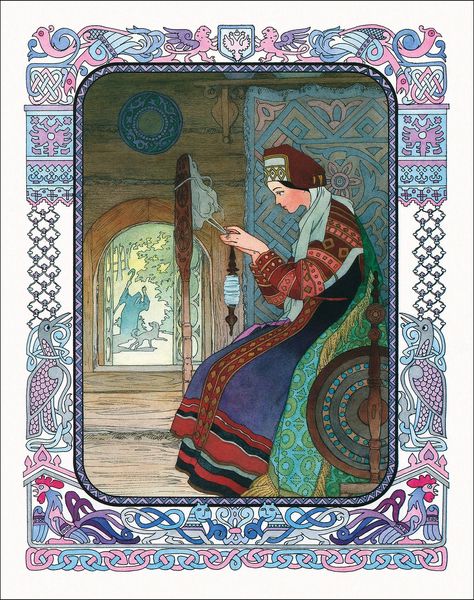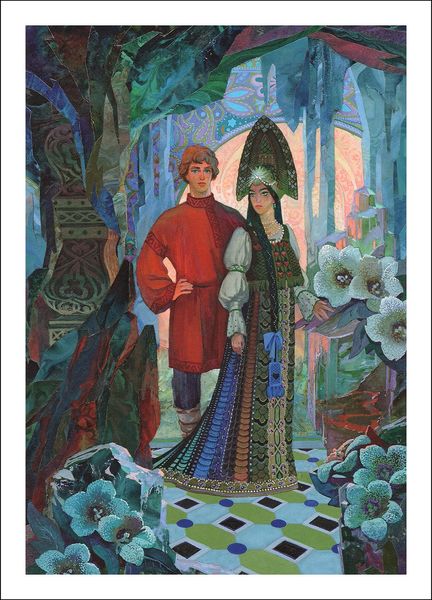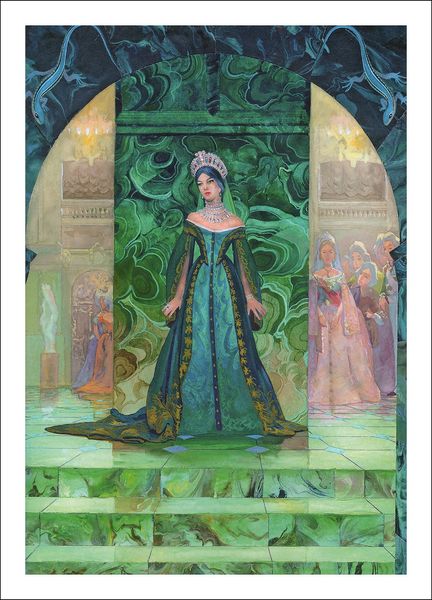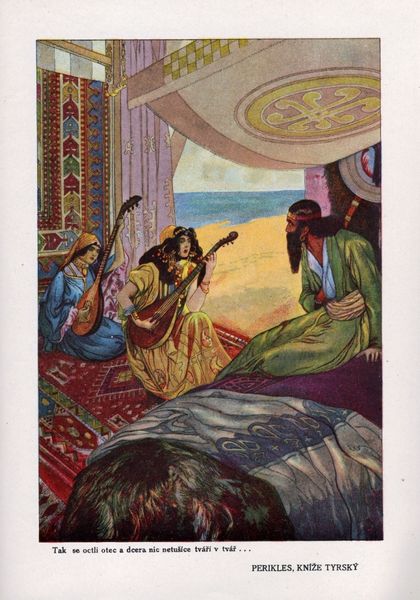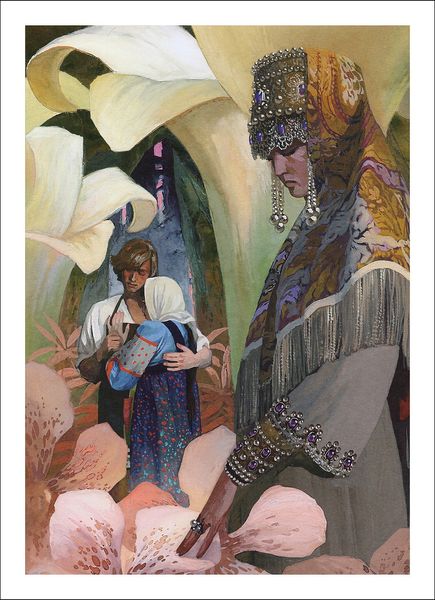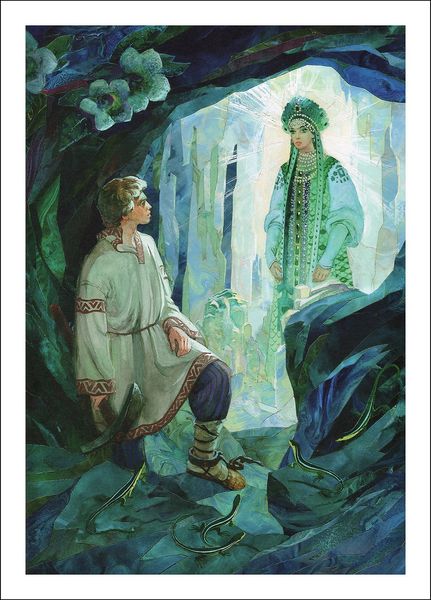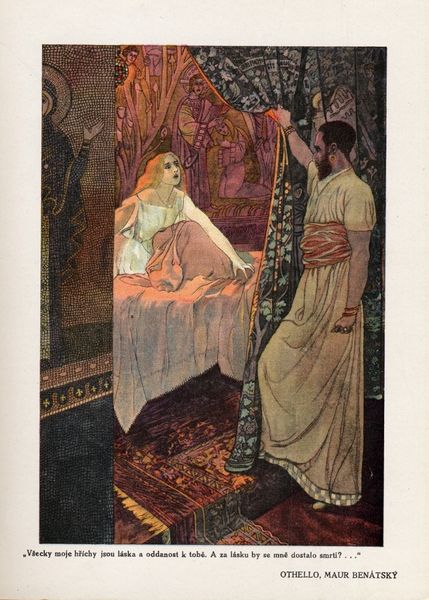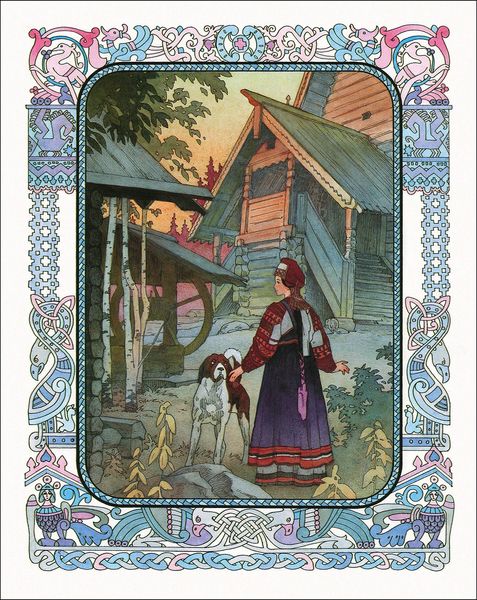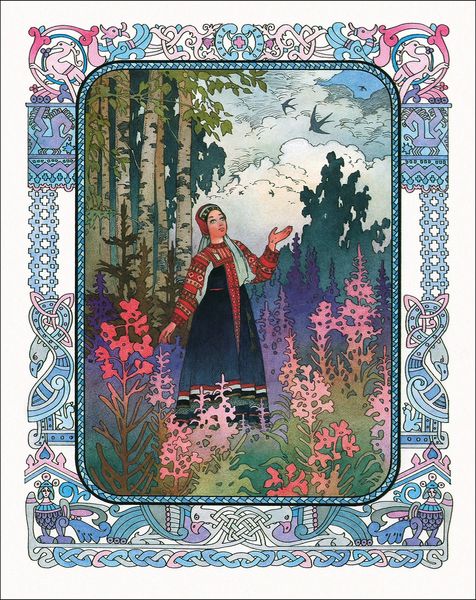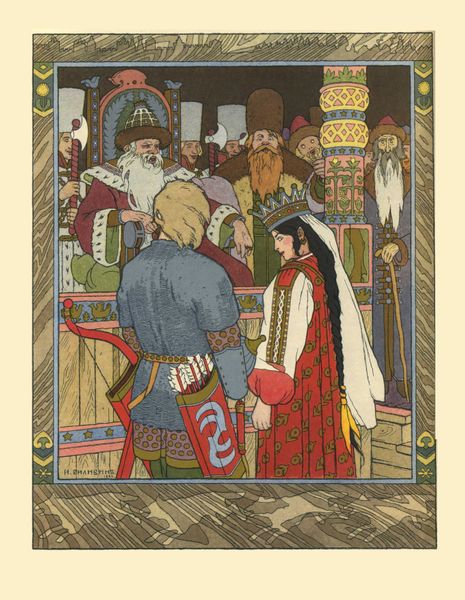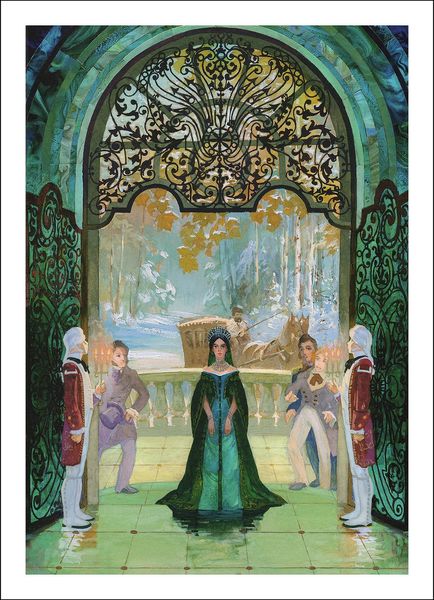
tempera, painting
#
medieval
#
narrative-art
#
tempera
#
painting
#
fantasy-art
#
figuration
#
naive art
Copyright: Vyacheslav Nazaruk,Fair Use
Curator: This is Vyacheslav Nazaruk's illustration for "The Tale of the Dead Princess and the Seven Knights," created in 1996 using tempera. It immediately pulls you into another world, doesn’t it? Editor: Yes, a world steeped in solemnity and candlelight. The somber scene almost glows; those little flames held by the mourners really do lend it a reverent tone, wouldn't you agree? Curator: Absolutely. Notice how the candlelight emphasizes the narrative? The princess lies in her coffin, surrounded by these figures. The faces express a potent combination of grief and something almost... protective. It's pure storytelling. Editor: I’m struck by the chains around the coffin. Such a strong visual, speaking perhaps of being trapped, or a spell, or a destiny that cannot be altered. It adds such weight. Curator: You've pinpointed something crucial about Nazaruk's use of symbols. Chains in folklore often signify binding oaths or fated outcomes. And in a deeper sense, that chain could stand for inescapable fate itself. He has blended Slavic folk motifs with classic fairytale tropes. Editor: Looking closer, the frame itself teems with detail. See how it weaves ornamental dragons and patterns – another visual language layered on top of the main scene? Curator: The frame acts as a proscenium, doesn’t it? It’s decorative, but it reinforces the storytelling aspect. The entire artwork almost looks like a page pulled from a meticulously crafted medieval manuscript, although with a modern touch. Editor: Indeed! There’s a gentleness too, wouldn't you say? Despite the sadness inherent to the image. Like it accepts sorrow, accepts fate. Curator: That is interesting. Maybe this gentleness comes from the style, but more profoundly it echoes a kind of resilience found in folklore across different eras. This tempera painting achieves a sense of mythic timelessness in that way, I think. Editor: Reflecting on it, there's something deeply human in how Nazaruk depicts grief, even within a fairytale context. It reminds us that symbols evolve, carrying sorrow from century to century. Curator: A sorrow softened perhaps by the beauty he invests within it, creating a kind of consoling harmony within its borders.
Comments
No comments
Be the first to comment and join the conversation on the ultimate creative platform.
